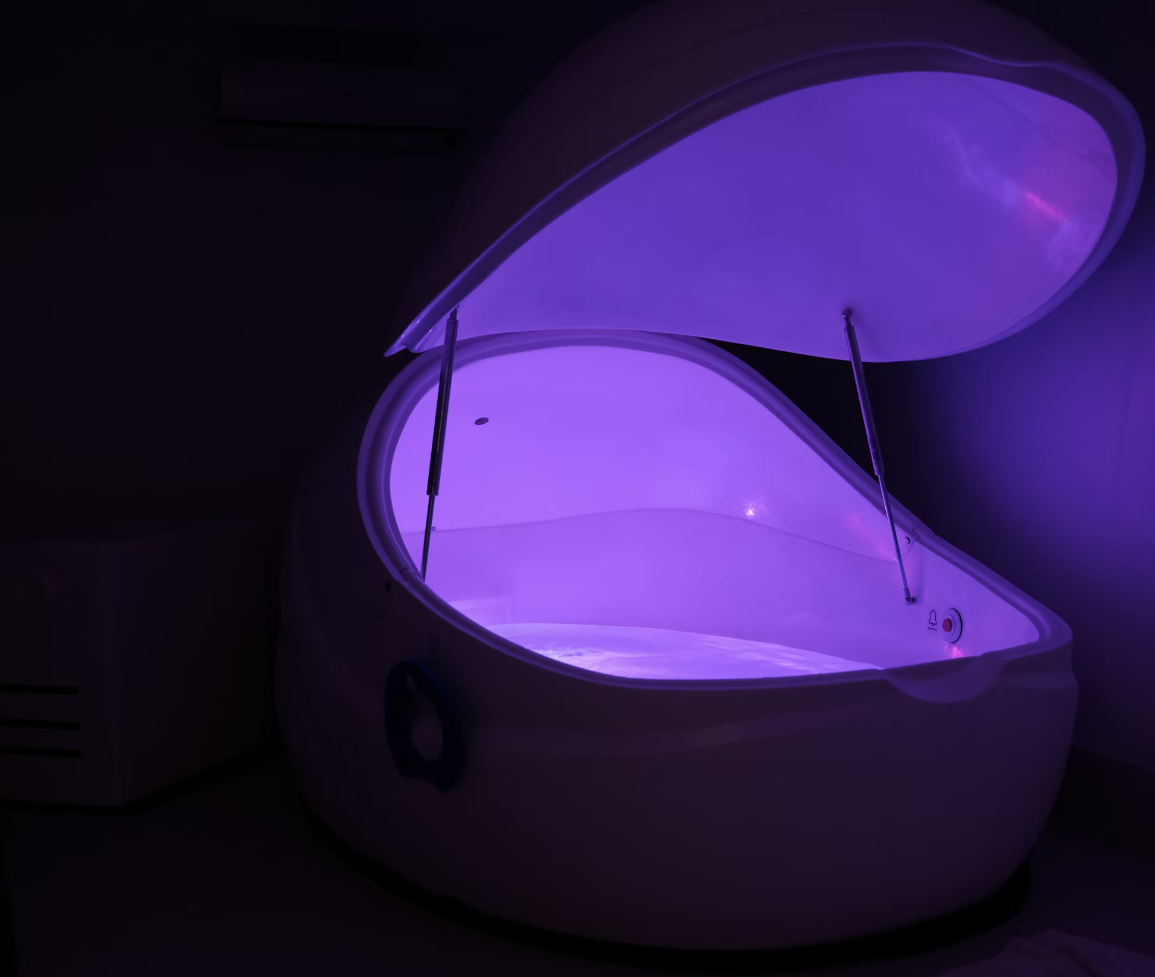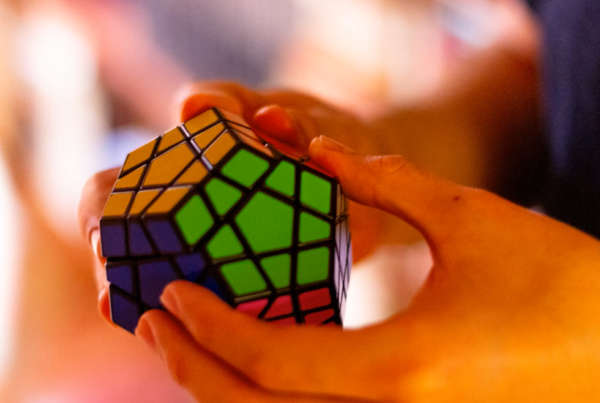
Humans have long experimented with methods to toy with the boundaries of perception, and using sensory deprivation has emerged as a surprisingly potent candidate. From an ancient CIA-endorsed torture method to a recent wellness and self-discovery trend, sensory deprivation exposes the peculiarities of the human brain’s relentless need to create, interpret, and adapt. By stripping away external stimuli, the mind is forced to confront its own internal landscape, offering profound neuroscientific insights into how we process reality itself.
Humans have long experimented with methods to toy with the boundaries of perception, and using sensory deprivation has emerged as a surprisingly potent candidate. From an ancient CIA-endorsed torture method to a recent wellness and self-discovery trend, sensory deprivation exposes the peculiarities of the human brain’s relentless need to create, interpret, and adapt. By stripping away external stimuli, the mind is forced to confront its own internal landscape, offering profound neuroscientific insights into how we process reality itself.

Photo by Galen Crout

Photo by Galen Crout
Our brain is constantly engaged in carefully constructing its own reality derived from the surrounding world. Through persistent gathering of information from all the visual, auditory, haptic, and olfactory senses, it selectively focuses on the most crucial inputs, processes them, and weaves them into a coherent narrative. But what happens with the brain when all sensory input is completely removed?
The short answer: it compensates, and does so really well – almost too well. When deprived of input from external stimuli, the brain deals with it by amplifying its internal activity, creating sensations and experiences to fill the void. Paradoxically, this heightened state of internal stimulation can lead to an even more overwhelming perception of reality, grounded in nothing but the brain itself. This hyperactivity of the mind can manifest itself in vivid mental imagery, heightened emotions, or hallucinations.
This phenomenon was first observed in cases of visually impaired yet psychologically healthy patients, as the Swiss philosopher and scientist Charles Bonnet documented in 1760. Named after its discoverer, the Charles Bonnet syndrome (CBS) is characterised by complex visual hallucinations that arise from disinhibitions of the cortical regions affecting vision in the absence of any psychological abnormalities (Rojas & Gurnani, 2023). The leading theory is that this disinhibition leads to spontaneous firing of neurons in such vision-associated areas, as supported by neuroimaging studies looking at random firings of the ventral occipital lobe in CBS patients (Adachi et al., 2000).
Even though CBS is linked to involuntary and long-term sensory deprivation, similar occurrences have been observed in visually and psychologically healthy patients, who have reported complex visual hallucination as rapidly as after a day of being blindfolded (Merabet et al., 2004). However, when it comes to experimentally induced all-round sensory deprivation, the research history has much darker roots. One of the pioneering names is Donald Hebb, who in his famous experiment in the 1950s placed participants in an isolation room, equipped with goggles, gloves, headphones, cardboard tubes around the arms to limit touch, and a white noise background. This was meant to be a solid 6-week set-up. Most participants broke down after around 48 hours, and none of them could manage a week.
“The heightened state of internal stimulation can lead to an even more overwhelming perception of reality. ”
The symptoms reported were simply bizarre. Subjects would believe in ghosts with strong conviction, perform very poorly on grade-school tasks such as simple arithmetics, and experience hallucinations in various sensory domains – including cases of hearing “a full choir accompanying the sun” and feeling “an electric shock coming from touching an imaginary doorknob” (Heron, 1957). These findings kickstarted a whole new wave of research, inspiring some very questionable experiments in the “golden age” of psychology – when ethical considerations were often secondary to creative experimentation.
For example, Dr. Cameron, the head of McGill’s psychiatry department in the late 50s, used Hebb’s sensory deprivation as a foundation for developing his own technique to ‘reprogram’ his patients’ minds after prolonged sensory deprivation. Even then, it was very controversial, with Miller going so far as to call it torture, given that mentally ill, institutionalised patients were not able to give informed consent to Cameron’s “treatment”. It is also believed that the Canadian government’s involvement, through heavy subsidies, wasn’t purely for the purpose of generating academic knowledge. At the time, during the early Cold War, there was a large concern that Soviet forces were using sensory deprivation to brainwash Canadian POWs in Korea, and understanding its principles could provide some sort of defence.
Of course, it didn’t end there, and this research was later utilised during the Bush-era for “enhanced interrogation” techniques (read:, torture) on US detainees, where the benign-sounding sensory deprivation was used to extract sensitive information (Salon, 2007). This form of severe psychological deterioration has also been documented throughout psychiatric seclusion and solitary confinement – practices that are still prevalent today. Some common symptoms include dissociation, psychosis, aggressive fantasies, self-mutilatory outbursts, delusions, and a loss of the sense of time – all fully and rapidly reversible after termination of isolation (Grassian, 1986). On a more contemporary dystopian note, another ominous example of its use would be the new Squid Games-esque reality TV show called ‘Solitary’, where participants undergo severe isolation for a prospect of winning $50,000. Now concluded, the controversial show was streamed 24/7, providing an intimate look into on-screen breaking points and hallucinations experienced by the participants (Mother Jones, 2008).
“Our brain is an excellent storyteller – and when it struggles to make sense of the silence, it creates its own fantastical world.”
That being said, sensory deprivation has also been linked to numerous benefits when administered moderately, consensually, and in an assisted environment. A pivotal moment was the invention and retail distribution of floatation tanks, where patients can feel weightless and relaxed while floating in a pod undisturbed by external stimuli. Some positive effects following a one-hour session include a reduction in anxiety, cortisol levels, muscle pain, and negative affect, accompanied by an increase in serenity (Feinstein et al., 2018). Furthermore, some patients experience profound states of mental clarity, out-of-body experiences, and ego dissolution comparable to meditation and psychedelic drugs (Slate, 2007). Unsurprisingly, sensory deprivation float therapy has already grown into a big wellness trend, and is easily accessible in Amsterdam starting around €50 per session.
Due to obvious limitations in research (an EEG or fMRI scan wouldn’t exactly fare well submerged in saltwater), scientific literature on what happens in the brain during such sensory deprivation remains scarce. However, we can infer that these global functional state changes (i.e. altered states of consciousness) may arise due to disrupting the brain’s ‘predictive coding’. Typically, the brain looks at previous experiences to assess incoming sensory information, generates predictions, and compares them to the actual ‘raw’ input to then construct an internal image of reality based on those odds (Spiegeloog, 2023). When there is no external input to measure those predictions against, the system collapses and goes completely wayward, leading to the formation of random internal stimuli in the form of amplified mental imagery (Pollak & Corlett, 2020). Other leading theories are linked to the overactivation of the Default Mode Network, a collection of distributed brain regions, which is broadly associated with rest states and introspection (Buckner et al, 2008).
There is still a lot of mystery and controversy regarding the underpinnings of why our brain freaks out at the absence of outside stimulation. What it does reveal, though, is that our brain is an excellent storyteller – and when it struggles to make sense of the silence, it creates its own fantastical world. This phenomenon teaches us about the fragility and untruthfulness of human perception, and our reliance on external stimuli only highlights the inevitable interconnectedness of the mental and the physical actors of our world. <<
References
- Adachi, N., Watanabe, T., Matsuda, H., & Onuma, T. (2000). Hyperperfusion in the lateral temporal cortex, the striatum and the thalamus during complex visual hallucinations: single photon emission computed tomography findings in patients with Charles Bonnet syndrome. Psychiatry and clinical neurosciences, 54(2), 157–162. https://doi.org/10.1046/j.1440-1819.2000.00652.
- Rojas, L. C., & Gurnani, B. (2023). Charles Bonnet syndrome. In StatPearls. StatPearls Publishing. https://www.ncbi.nlm.nih.gov/books/NBK585133/
- Merabet, L. B., Maguire, D., Warde, A., Alterescu, K., Stickgold, R., & Pascual-Leone, A. (2004). Visual hallucinations during prolonged blindfolding in sighted subjects. Journal of neuro-ophthalmology, 24(2), 109-113
- Heron, W. (1957). The pathology of boredom. Scientific American, 196, 52-56.
- Cameron, D.E. Psychic driving: Dynamic implant. Psych Quar 31, 703–712 (1957). https://doi.org/10.1007/BF01568762
- https://www.salon.com/2007/06/07/sensory_deprivation/
- Grassian, S., & Friedman, N. (1986). Effects of sensory deprivation in psychiatric seclusion and solitary confinement. International journal of law and psychiatry, 8(1), 49–65. https://doi.org/10.1016/0160-2527(86)90083-x
- Feinstein, J. S., Khalsa, S. S., Yeh, H. W., Wohlrab, C., Simmons, W. K., Stein, M. B., & Paulus, M. P. (2018). Examining the short-term anxiolytic and antidepressant effect of Floatation-REST. PloS one, 13(2), e0190292. https://doi.org/10.1371/journal.pone.0190292
- https://slate.com/human-interest/2013/05/sensory-deprivation-flotation-tanks-i-floated-naked-in-a-pitch-black-tank-and-you-should-too.html
- https://www.spiegeloog.amsterdam/controlled-hallucinations/
- Pollak, T. A., & Corlett, P. R. (2020). Blindness, psychosis, and the visual construction of the world. Schizophrenia Bulletin, 46(6), 1418-1425
- Buckner, R. L., Andrews‐Hanna, J. R., & Schacter, D. L. (2008). The brain’s default network: anatomy, function, and relevance to disease. Annals of the new York Academy of Sciences, 1124(1), 1-38.
- https://motherjones.com/politics/2008/03/voluntary-confinement/
Our brain is constantly engaged in carefully constructing its own reality derived from the surrounding world. Through persistent gathering of information from all the visual, auditory, haptic, and olfactory senses, it selectively focuses on the most crucial inputs, processes them, and weaves them into a coherent narrative. But what happens with the brain when all sensory input is completely removed?
The short answer: it compensates, and does so really well – almost too well. When deprived of input from external stimuli, the brain deals with it by amplifying its internal activity, creating sensations and experiences to fill the void. Paradoxically, this heightened state of internal stimulation can lead to an even more overwhelming perception of reality, grounded in nothing but the brain itself. This hyperactivity of the mind can manifest itself in vivid mental imagery, heightened emotions, or hallucinations.
This phenomenon was first observed in cases of visually impaired yet psychologically healthy patients, as the Swiss philosopher and scientist Charles Bonnet documented in 1760. Named after its discoverer, the Charles Bonnet syndrome (CBS) is characterised by complex visual hallucinations that arise from disinhibitions of the cortical regions affecting vision in the absence of any psychological abnormalities (Rojas & Gurnani, 2023). The leading theory is that this disinhibition leads to spontaneous firing of neurons in such vision-associated areas, as supported by neuroimaging studies looking at random firings of the ventral occipital lobe in CBS patients (Adachi et al., 2000).
Even though CBS is linked to involuntary and long-term sensory deprivation, similar occurrences have been observed in visually and psychologically healthy patients, who have reported complex visual hallucination as rapidly as after a day of being blindfolded (Merabet et al., 2004). However, when it comes to experimentally induced all-round sensory deprivation, the research history has much darker roots. One of the pioneering names is Donald Hebb, who in his famous experiment in the 1950s placed participants in an isolation room, equipped with goggles, gloves, headphones, cardboard tubes around the arms to limit touch, and a white noise background. This was meant to be a solid 6-week set-up. Most participants broke down after around 48 hours, and none of them could manage a week.
“The heightened state of internal stimulation can lead to an even more overwhelming perception of reality.”
The symptoms reported were simply bizarre. Subjects would believe in ghosts with strong conviction, perform very poorly on grade-school tasks such as simple arithmetics, and experience hallucinations in various sensory domains – including cases of hearing “a full choir accompanying the sun” and feeling “an electric shock coming from touching an imaginary doorknob” (Heron, 1957). These findings kickstarted a whole new wave of research, inspiring some very questionable experiments in the “golden age” of psychology – when ethical considerations were often secondary to creative experimentation.
For example, Dr. Cameron, the head of McGill’s psychiatry department in the late 50s, used Hebb’s sensory deprivation as a foundation for developing his own technique to ‘reprogram’ his patients’ minds after prolonged sensory deprivation. Even then, it was very controversial, with Miller going so far as to call it torture, given that mentally ill, institutionalised patients were not able to give informed consent to Cameron’s “treatment”. It is also believed that the Canadian government’s involvement, through heavy subsidies, wasn’t purely for the purpose of generating academic knowledge. At the time, during the early Cold War, there was a large concern that Soviet forces were using sensory deprivation to brainwash Canadian POWs in Korea, and understanding its principles could provide some sort of defence.
Of course, it didn’t end there, and this research was later utilised during the Bush-era for “enhanced interrogation” techniques (read:, torture) on US detainees, where the benign-sounding sensory deprivation was used to extract sensitive information (Salon, 2007). This form of severe psychological deterioration has also been documented throughout psychiatric seclusion and solitary confinement – practices that are still prevalent today. Some common symptoms include dissociation, psychosis, aggressive fantasies, self-mutilatory outbursts, delusions, and a loss of the sense of time – all fully and rapidly reversible after termination of isolation (Grassian, 1986). On a more contemporary dystopian note, another ominous example of its use would be the new Squid Games-esque reality TV show called ‘Solitary’, where participants undergo severe isolation for a prospect of winning $50,000. Now concluded, the controversial show was streamed 24/7, providing an intimate look into on-screen breaking points and hallucinations experienced by the participants (Mother Jones, 2008).
“Our brain is an excellent storyteller – and when it struggles to make sense of the silence, it creates its own fantastical world.”
That being said, sensory deprivation has also been linked to numerous benefits when administered moderately, consensually, and in an assisted environment. A pivotal moment was the invention and retail distribution of floatation tanks, where patients can feel weightless and relaxed while floating in a pod undisturbed by external stimuli. Some positive effects following a one-hour session include a reduction in anxiety, cortisol levels, muscle pain, and negative affect, accompanied by an increase in serenity (Feinstein et al., 2018). Furthermore, some patients experience profound states of mental clarity, out-of-body experiences, and ego dissolution comparable to meditation and psychedelic drugs (Slate, 2007). Unsurprisingly, sensory deprivation float therapy has already grown into a big wellness trend, and is easily accessible in Amsterdam starting around €50 per session.
Due to obvious limitations in research (an EEG or fMRI scan wouldn’t exactly fare well submerged in saltwater), scientific literature on what happens in the brain during such sensory deprivation remains scarce. However, we can infer that these global functional state changes (i.e. altered states of consciousness) may arise due to disrupting the brain’s ‘predictive coding’. Typically, the brain looks at previous experiences to assess incoming sensory information, generates predictions, and compares them to the actual ‘raw’ input to then construct an internal image of reality based on those odds (Spiegeloog, 2023). When there is no external input to measure those predictions against, the system collapses and goes completely wayward, leading to the formation of random internal stimuli in the form of amplified mental imagery (Pollak & Corlett, 2020). Other leading theories are linked to the overactivation of the Default Mode Network, a collection of distributed brain regions, which is broadly associated with rest states and introspection (Buckner et al, 2008).
There is still a lot of mystery and controversy regarding the underpinnings of why our brain freaks out at the absence of outside stimulation. What it does reveal, though, is that our brain is an excellent storyteller – and when it struggles to make sense of the silence, it creates its own fantastical world. This phenomenon teaches us about the fragility and untruthfulness of human perception, and our reliance on external stimuli only highlights the inevitable interconnectedness of the mental and the physical actors of our world. <<
References
- Adachi, N., Watanabe, T., Matsuda, H., & Onuma, T. (2000). Hyperperfusion in the lateral temporal cortex, the striatum and the thalamus during complex visual hallucinations: single photon emission computed tomography findings in patients with Charles Bonnet syndrome. Psychiatry and clinical neurosciences, 54(2), 157–162. https://doi.org/10.1046/j.1440-1819.2000.00652.
- Rojas, L. C., & Gurnani, B. (2023). Charles Bonnet syndrome. In StatPearls. StatPearls Publishing. https://www.ncbi.nlm.nih.gov/books/NBK585133/
- Merabet, L. B., Maguire, D., Warde, A., Alterescu, K., Stickgold, R., & Pascual-Leone, A. (2004). Visual hallucinations during prolonged blindfolding in sighted subjects. Journal of neuro-ophthalmology, 24(2), 109-113
- Heron, W. (1957). The pathology of boredom. Scientific American, 196, 52-56.
- Cameron, D.E. Psychic driving: Dynamic implant. Psych Quar 31, 703–712 (1957). https://doi.org/10.1007/BF01568762
- https://www.salon.com/2007/06/07/sensory_deprivation/
- Grassian, S., & Friedman, N. (1986). Effects of sensory deprivation in psychiatric seclusion and solitary confinement. International journal of law and psychiatry, 8(1), 49–65. https://doi.org/10.1016/0160-2527(86)90083-x
- Feinstein, J. S., Khalsa, S. S., Yeh, H. W., Wohlrab, C., Simmons, W. K., Stein, M. B., & Paulus, M. P. (2018). Examining the short-term anxiolytic and antidepressant effect of Floatation-REST. PloS one, 13(2), e0190292. https://doi.org/10.1371/journal.pone.0190292
- https://slate.com/human-interest/2013/05/sensory-deprivation-flotation-tanks-i-floated-naked-in-a-pitch-black-tank-and-you-should-too.html
- https://www.spiegeloog.amsterdam/controlled-hallucinations/
- Pollak, T. A., & Corlett, P. R. (2020). Blindness, psychosis, and the visual construction of the world. Schizophrenia Bulletin, 46(6), 1418-1425
- Buckner, R. L., Andrews‐Hanna, J. R., & Schacter, D. L. (2008). The brain’s default network: anatomy, function, and relevance to disease. Annals of the new York Academy of Sciences, 1124(1), 1-38.
- https://motherjones.com/politics/2008/03/voluntary-confinement/


